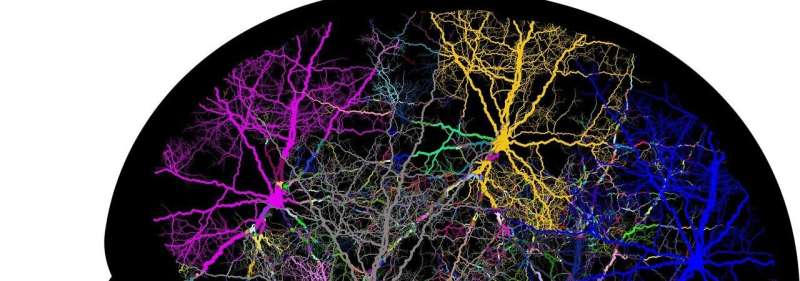Optogenetics may be overpromised as potential neurological treatment

A new paper in Oxford Open Neuroscience, published by Oxford University Press, indicates that optogenetics, suggested as a promising treatment for many psychological and neurological conditions, may be further away from effective human adoption than observers previously thought.
Optogenetics has received considerable attention because of its demonstrated promise in rodent brains to manipulate cells and circuits. Developed by scientists at Stanford in 2005, the technique involves investigators inserting DNA into neurons to make them responsive to light. Optogenetics makes it possible to use light to turn neurons on and off. In the laboratory, researchers have used the technique to study smell, hearing, and addictive behavior in mice.
A recent review, led by Sébastien Tremblay at the University of Pennsylvania and published in Neuron, claimed that optogenetics could be effective in therapy for humans. “We hope this resource will be used not only by basic scientists trying to uncover the workings of the primate brain using optogenetics,” read the paper, “but also by translational scientists hoping to bring this powerful technology to the service of patients with neurological or psychiatric conditions.” Here, the authors re-evaluate the success of the technique as reported in the Neuron study.
The Neuron review was made up of contributions from 45 research laboratories, with 1042 individual data points. These represented experiments in 198 monkeys. They found that optogenetics in nonhuman primates had a 91% success rate—based on outcomes related to measured changes in neural activity or through observed behavioral changes. When the researchers considered only “strong” outcomes, they found the technique to be effective in 76% of cases.
Researchers here believe that the definition of experimental success used for the Neuron study was too broad. The technique was considered successful if it generated neurophysiological or behavioral effects. Furthermore, what the Neuron researchers counted as a successful behavioral effect included subjective evaluations of narrative accounts of animals’ behaviors as well as results judged qualitatively to be “weak.”
Researchers here posit that meaningful evidence of the successful use of optogenetics in neuroscience would require some proof that neurons had been modulated through the technique, in addition to observing a change in animal behavior. Given these criteria, the present authors re-evaluated the database with stricter definitions of success, requiring both neurological modulation and behavioral change, and found that optogenetics in nonhuman primates had a 62.5% success rate. When the researchers considered only strong outcomes, they found the technique to be effective in a mere 53.1% of cases. They believe that optogenetic manipulation is not yet at a stage of development where it can be applied to investigate treatment for complex behaviors relevant to psychiatric conditions in humans.
“These lower numbers do not suggest that scientists should abandon optogenetics as a subject for inquiry and potential treatment, said the paper’s lead author, Eliza Bliss-Moreau. “But if scientists and funders think that a technology is more established and efficacious than it actually is, we run the risk of adopting it and abandoning technology that does work, and actually slowing, rather than speeding discovery.”
Source: Read Full Article
